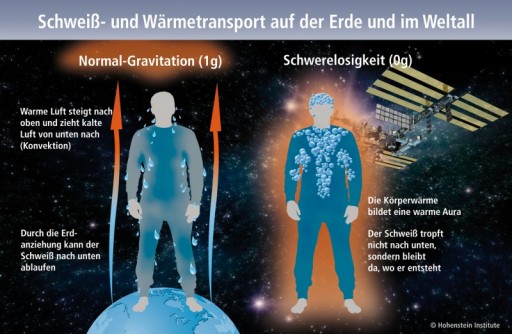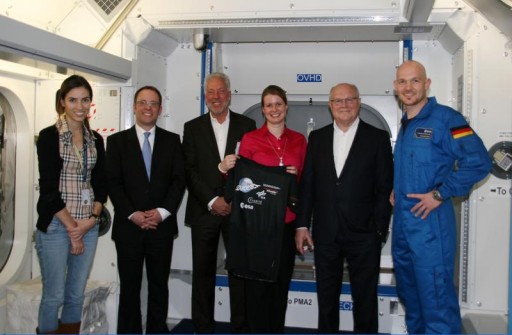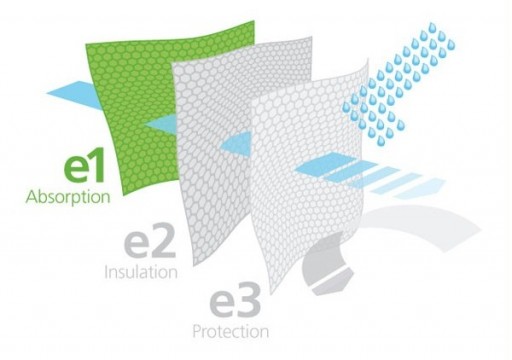ESA SpaceTex

The Spacetex study is the first clothing physiology experiment to be performed in microgravity to provide new insights into the interaction between body, clothing and climate. The study will look at how gravity (or the absence of gravity) affects the way heat and sweat is transported through clothing that is worn next to the skin. The full name of the study is Innovative and Highly Functional Fabrics for Humans in Space and on Earth (SPACETEX).
This experiment is of relevance in space as a lack of gravity causes different properties of body heat and sweat transport during exercise – in space, heat and sweat are not transported onto clothing or into the environment and instead envelope the body which causes a loss of cooling and increases the physiological strain of exercise in space. Developing clothing to improve the transport of heat and sweat away from the body will improve exercise in space for future missions but also improve clothing for extreme environments on Earth.


Objectives of the SPACETEX experiment include the determination of thermo-physiological properties of fabrics under different conditions (1G and microgravity), the examination of water vapor stability, thermal resistance, buffering of vaporous and liquid sweat, sweat transport, drying time, thermal insulation in dry and wet state. Additionally, the study will take into account the skin sensorial comfort of new textiles, looking at the wet cling index, the number of contact points, bending stiffness, and absorption and surface indices.
The experiment protocol calls for a crew member wearing the SpaceTex garments in at least two preflight and postflight ground tests and two tests in space, each garment being worn for two tests. Each tests requires the crew member to wear the garment during cardiovascular work-out sessions that are 45 to 75 minutes in duration and include at least 15 minutes of exercise with a minimum intensity of 50% VO2 max or higher.
The garments consist of a top and pants – a long and short sleeve top is available to be worn individually or with the long top above the short one as they are designed to interact as a system regarding sweat and moisture transport.
“The textile is a single- or multi-layer knitted product which uses both spun and textured yarns. This mixture of different yarns allows moisture to be transported from the first layer to the outer layer, where it can evaporate,” notes a description by Schoeller Textil AG, the supplier of the SpaceTex garments. While one garment consists of PES, PET and PBT, the second garment is made of cotton.
It is important that exercise sessions are similar in ground and space testing using the CEVIS or COLBERT exercise devices aboard ISS. Body functions are monitored via biomed sensors. The experiment sessions include a survey filled out by the crew members to assess clothing comfort.
The worn garments are packed in a sealed bag with a Tenax tube (odor trap) for return to Earth and microbial analysis within three months. The Tenax tubes will be used for gas chromatography mass spectrometer analysis.
